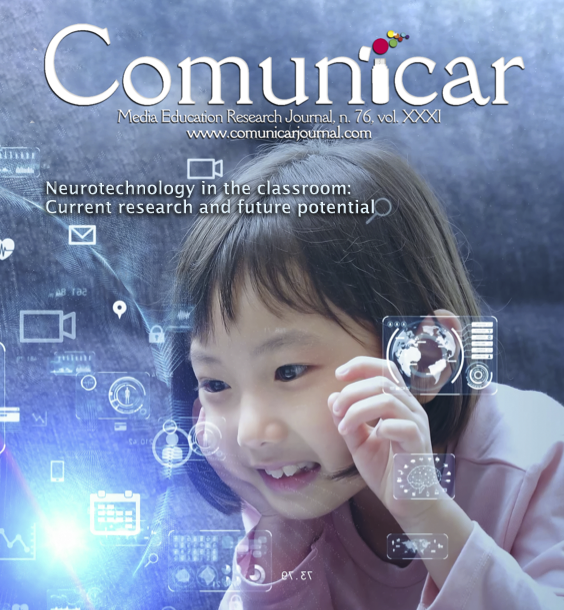
In a new issue of the educational journal Comunicar, Jo van Herwegen and Michael Thomas from the CEN have teamed up with María-José Hernández-Serrano from the University of Salamanca in Spain to co-edit a special edition on the use of neurotechnology in the classroom.
What counts as a neurotechnology? Neurotechnology comprises a range of techniques that offer information about the operation of the brain separate from how it shows up in behaviour, especially the kinds of behaviour that educators typically monitor to track students’ progress in learning. The use of neurotechnology is therefore rooted in the assumption that the way that learning works in the brain will be relevant for educators.
Neurotechnologies might directly reflect physiological markers of brain function, such as in the brain’s electrical discharges (electroencephalography or EEG) or its regional oxygenated blood flow (functional Near-Infrared Spectroscopy or fNIRs). They may reflect body markers of the operation of the sympathetic autonomic nervous system, the network of nerves that helps the body activate its “fight-or-flight” response. Such markers often index emotional processes (for example, the electrical conductance of the surface of the skin, which depends on sweat release, so-called electrodermal activity). Or they may detect subtle behavioural markers reflecting attention processes or memory retrieval (for example, eye-tracking or pupil dilation). Together, these measures can offer a window on students’ engagement in the classroom, their current knowledge, their emotional state, and the nature of learning as it unfolds.
There are two advantages that neurotechnology can potentially bring to the classroom. First, it can offer educators real-time information to guide practices, either on the current state of their students or the effectiveness of the teacher’s current activities – though the technical challenge of instantly turning rich neurotechnology data into an educationally usable form renders this still, perhaps, a promise rather than a reality.
The second advantage is that using neurotechnologies in the classroom provides greater ecologically validity to study learning and instruction in the context where it occurs, rather than in the artificially controlled context of the laboratory. This means that the use of neurotechnologies in the classroom engages with the embodied sensory, emotional, and social context in which teaching and learning actually occur.
The special Issue is a contribution to this emerging field, compiling a variety of studies conducted in Spain, Portugal, Latin America, and Taiwan, carried out with different neurotechnologies and approaches, from different perspectives. An introduction to the volume and an overview of the papers can be found here.
